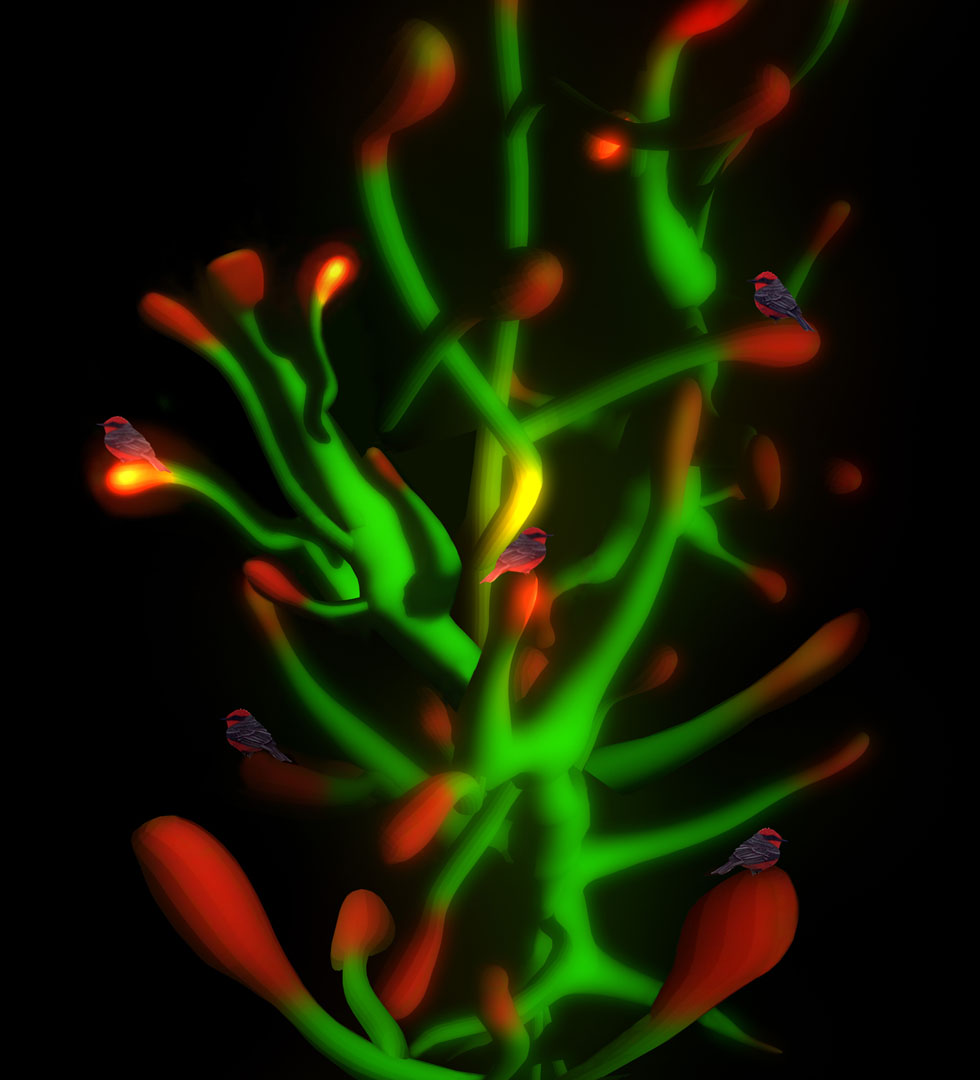Vermilions and Neurons, from The Growing Garden series, was the first work created with the screen painting technique. In the whole series I was inspired by scientific and nanomolecular images and I made a series of 3D animations reminiscent of plant worlds or, in some cases, primordial landscapes. On these visionary backgrounds, in continuous mutation, I worked by adding pictorial elements with enamel colours laid directly on plasma screens (screen painting). I applied the same procedure on the 3D images printed on cotton where I intervened with acrylic paint. In this case, I worked on the ambiguity of the two forms of painting, digital and traditional, so attaining a delicate perceptual effect.
The Growing Garden
I created a series of works as part of The Growing Garden project, since the nanoworld brought me into contact with completely new images, obtained with the most powerful optical microscopes, evoking ambiguous landscapes, alienating places that recall reality in its fragmentation.
Continuing a line of research that I had undertaken in 1983 with In Corporea Mente, I wondered about the transformation of forms, their unfolding from microcosm to macrocosm. The branched structure of a mineral, for example, is similar in shape and process of aggregation to the peripheral region of a neuron or the atomic structure of some polymers or, again, to the conformation of a tree or coral. I therefore penetrated, through these scientific images, into wonderful woods and dust clouds, which I wanted to rework in 3D, animating each of them with a series of creatures taken from the animal or vegetable world that I painted directly on the screen or canvas, multiplying the image as if it were a Zen ritual. The paradox consists of the fact that the pictorial image is the bearer of a uniqueness and, therefore, of a different DNA for each. If, through self-replication (a powerful promise of nanotechnology), cells build copies of themselves by abolishing diversity, I wanted to follow the opposite procedure: through what is seemingly identical I sought to reanimate the differences.
